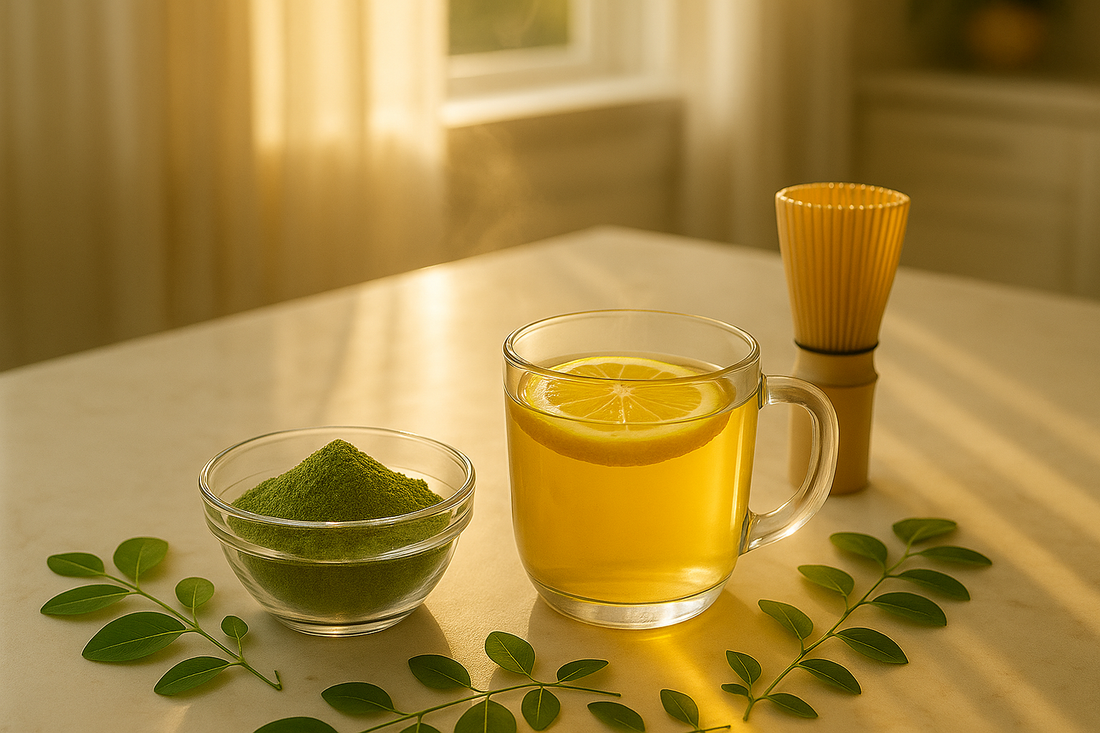
How to Prepare Moringa Powder at Home Step-by-Step Guide
Share
Preparing moringa powder at home involves drying fresh moringa leaves and grinding them into a fine, green powder. The best way to approach it is by carefully cleaning the leaves, air drying or sun drying them under safe conditions, and blending into powder for storage. This usually leads to a nutrient dense supplement you can add to smoothies, teas, or meals. Recent studies (2024-2025) show that moringa leaf powder retains up to 90% of antioxidants when dried naturally compared to less than 60% with high heat drying.
Why this matters ?
Global searches for “DIY moringa powder” have doubled in the past year as more people turn toward affordable, home made superfoods instead of costly imported brands. Moringa is being called the “green gold” of wellness trends, especially for energy, skin glow, and immunity.
Longevity trend: A 2019 clinical review noted moringa’s role in supporting blood sugar balance and reduced fatigue.
How do you prepare moringa powder step-by-step?
Choose young, vibrant green leaves free of pests or yellowing. Make sure to Harvest or source fresh moringa leaves
Wash thoroughly, Rinse in clean water 2–3 times. Optionally soak in a mild salt water solution for 5 minutes to remove dust and microbes.
Dry the leaves
Air-dry method (best for nutrients):
Spread leaves on a clean cotton cloth or mesh tray indoors, away from direct sunlight, for 3–5 days.
Sun-dry method (faster, but slightly less nutrient retention): Dry under mild morning sunlight for 1–2 days. Avoid harsh noon heat.
Dehydrator/oven method:
Use 40–50°C (104–122°F) for 4–6 hours.
Grind into powder
Once crisp, crush leaves in a blender or mortar and pestle until fine.
Store properly
Store it in a clean, airtight glass jar and keep it in a cool, dark spot. It’ll stay fresh for up to 6 months.
What foods pair well with moringa powder?
Morning smoothie or green juice: For natural energy.
Midday meal topping: Sprinkle on soups, dals, or salads.
Evening tea: Stir into warm water with lemon for gentle digestion support.
Pro tip: Avoid more than 1–2 teaspoons daily unless advised by a nutritionist.
Common mistakes to avoid
Drying in direct harsh sunlight → destroys vitamin C.
Storing in plastic bags → leads to moisture and mold.
Grinding before fully dry → results in clumps and spoilage.
Over-consumption → can cause stomach upset.
Best practices and expert tips
Use a dedicated grinder (coffee/spice grinder) for fine texture.
Line trays with clean cloth for even airflow.
Combine moringa with black pepper in recipes studies show it enhances nutrient absorption.
Label jars with date of preparation to track freshness.
Recommended tools & resources
Affordable dehydrator : Saves time and preserves 85–90% nutrients.
Glass mason jars with silicone seals: Prevents air leaks.
Frequently asked
How long does homemade moringa powder last?
Up to 6 months in an airtight jar kept in a cool, dry place.
Can I make moringa powder without sun?
Yes. Air-dry indoors or use a dehydrator for best results.
Is homemade moringa powder safe?
Yes, if leaves are washed well and dried completely to avoid mold.
How much should I consume daily?
1–2 teaspoons is safe for most adults, based on 2024 nutrition studies.
Can I add stems or flowers?
Stick to leaves for powder. Stems are fibrous, flowers are used differently.
Actionable next steps
Start with 100–200g fresh leaves to practice the process.
Keep a weekly prep routine and small batches stay fresher.
Experiment by adding to your daily tea, smoothie, or breakfast bowl.
Key takeaways
Moringa powder at home is affordable, fresh, and nutrient-dense.
The best method: wash → air-dry → grind → store airtight.
Avoid direct harsh sunlight and plastic storage.
Use 1–2 teaspoons daily for sustained energy, immunity, and skin health.
